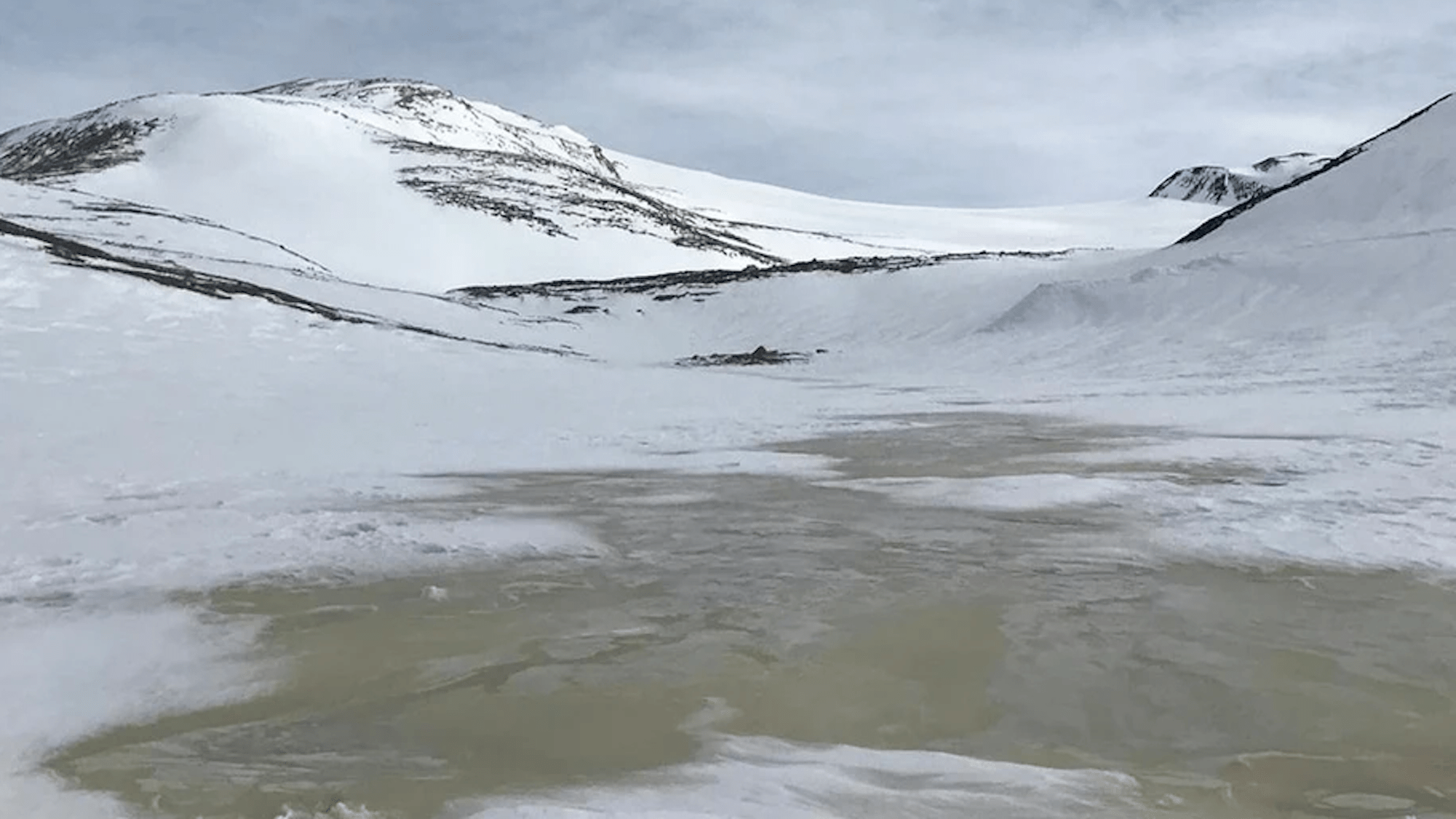Antarctica’s Lake Enigma, located between the Amorphous and Boulder Clay glaciers, regularly experiences temperatures around 7 degrees Fahrenheit. In the winter months, that number can drop as low as -41 degrees. Experts have long believed the remote lake to be completely frozen and inhospitable to life, but new evidence proves that at least some microbiotic life can find a way even in such frigid conditions.
Researchers led by the National Research Council of Italy’s Institute of Polar Sciences identified the unicellular organisms during the “XXXV Italian Expedition to Antarctica” that took place from November 2019-January 2020. Despite their assumption that the lake was frozen and devoid of organisms, ground-penetrating radar scans indicated the presence of liquid water underneath ice caps ranging between roughly 11 and 36 feet deep. Below these icy blocks were layers of stratified water columns at least 39 feet deep. Intrigued by the discovery, researchers then used a custom-made thermal melt head drilling system that allowed them to extract water samples without contaminating them.
According to the team’s paper, published on December 3rd in Communications Earth & Environment, subsequent lab tests confirmed a total of 21 bacterial and eukaryotic phyla in Lake Enigma’s surface ice, stratified water column layers, and microbial mats. Examples included Pseudomonadota, Actinobacteriota and Bacteroidota, but as the study’s announcement explains, the most surprising find was a “proliferation of the bacteria superphylum Patescibacteria.” These extremely simple lifeforms feature a small genome that allows their comparatively tiny cells to only perform a select number of processes with limited metabolic functions.
“As a consequence, these bacteria have adopted an obligate symbiotic or predatory lifestyle, relying entirely on their respective prokaryotic host cells,” the study’s authors wrote.
Although more research is needed, the team theorizes that an ancient Lake Enigma once possibly hosted a wholly different ecosystem filled with a diverse array of living organisms. At some point in the past, however, the body of water formed a permanently frozen top layer that remains to this day.
[Related: What will Antarctica look like in 2070?]
“The ice-sealed planktonic and benthic microbiota of Lake Enigma likely represent persistent legacy biota that arose from the lake’s ancient microbial ecosystem before the freeze-up,” researchers conclude. Because of this, the current ecosystem includes a “simple aquatic food web,” although some of the remaining microbacteria “may play unusual roles in the lake’s ecosystem that do not play out in other ice-covered Antarctic lakes.”


